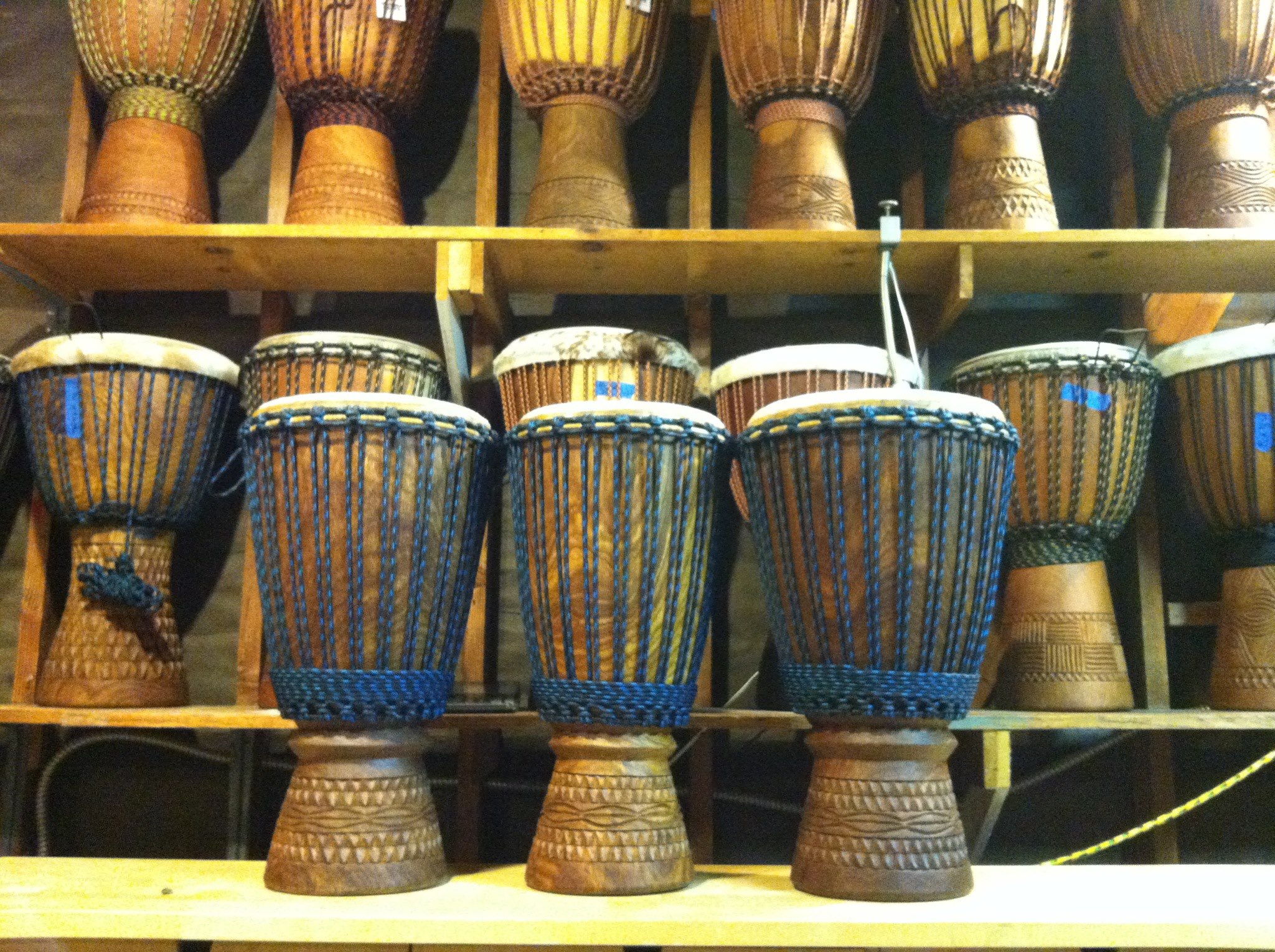People often ask me, “how do I learn a new djembe rhythm composition”? and say “I can never remember how the parts go in west african drumming”!. Memorization is indeed challenging for most of us. I would like to tell you how I do it and offer some suggestions that may be helpful and fun.
I highly recommend developing a whole small simple learning system for any type of drumming you do. And also, being systematic about your approach to drums. This is what works the best for me. So for me this means every time I learn a new djembe or conga drum rhythm I go through a set of things I do to learn it. I rely on this system and it gives me confidence no matter how hard and impossible it might seem at the time of learning.
For me playing drums and learning in a class from a teacher has not really gotten much easier as the years fly by. I still have my blocks. I just no longer attach to the blocks. I don’t get down on my self or berate myself for “not getting it”. I know because I have my system, I will get it! I have developed simple tools.
Your mental attitude therefore, is very important. Don’t tell yourself you can’t do it. I am constantly teaching people things they tell me they “can’t learn” on drums, so I see this all the time.
I say, do everything you can within your power to win the battle. Use every tool available to you. If it works for you watching, or listening or writing then use it and do it. We all learn differently and no one way is better then another way. It is about what works for you.
I came home from 3 classes with Bolokada this weekend filled to the brim with new information but confused what each, rhythm and part was. The sangban part from Malu seemed impossible to learn at the time. What I like to refer as a “martian part”, (no offence to any martians intended).
There was so much information I did not know where to begin. So I decided to pick one thing a t a time and work on that only. I spent one evening and day on a solo ride. It sounds excessive, but it was difficult and I wanted to burn it in. I did not just practice that. I would repeat that phrase by itself, into the air. Or I would play it along with my drum machine. Then maybe repeat it a bunch then work off of it. But never letting myself stray to far. One thing at a time. Simplify.
Once I got a hold of that part I decided to tackle Malu. I started with the kinkini part then gambled (on staying sane) and went right to the seemingly impossible (martian) sang ban part. Part of me always goes through this phase of saying, “this is impossible” and the other part goes, “you can can get this”.
The trick, (and it’s an important one if you are not the quickest learner like me), is to go note by note. Our natural impulse is to try to get it all at once. But the key when learning rhythms is to listen and play back only the first note of the rhythm you are listening to as it cycles by.
Then I add the second one and third one. Gradually the harder notes will come if you stick it out. This system has never failed me. Even with the most difficult rhythms. Give yourself the time and eventually the rhythm will indeed reveal itself to you.
Basicaly what i like to do, my rule for learning drums is to come home the day of the class I took and first… try to see what I remembered from the drum class on my own. Usually it is not too much. LOL!
Then I like to play drums along with the recording. *(don’t forget your digital recorders folks!). I then usually get excited that my memory is triggered and and write out all the rhythm parts. If it is west african i ike to start with the kinking part.
There is no way around the fact that writing out parts numerically will help you remember the drum rhythms and or composition and also help you understand how the rhythm gets structured. It is not a replacement for learning a feel it is a rhythm reference tool for any type pot percussion. Tablature is good!
After I have listened to each part from class (or watched) and written out the rhythm, I then like to program it into my drum machine so i can not only experience how it build it up, but can then play along to it as well. Learning to layer parts is a sure way to learn all about your rhythm arrangement and great practice for showing others how to play or figuring out where their parts go as well.
If you have a smart phone then there is all kinds of apps for recording, sequencing and programming rhythms as well as a metronome you can practice to stay in time.
Even better is to record each part on a multi track recording program like garage band in my lap top. So now I have, tried on my own, played along, written it out, recorded to it and lastly I will play back the recording and practice and have fun soloing on djembe to it.
Try to hear the dunun lines and parts as melodies, just like a bass in a band.
Hearing the djembe parts as jingles or short songs is also very helpful, too.

